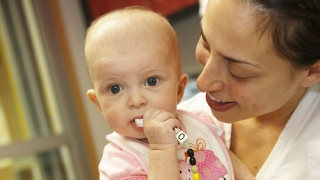About Circumcision
What is circumcision?
The penis has two main parts, the shaft and the head (called the glans). One continuous layer of skin, the foreskin, covers the shaft and glans. When a baby boy is circumcised, the foreskin covering the glans is removed.
Who needs a circumcision?
The debate over circumcision is an ongoing discussion. The American Academy of Pediatrics (AAP) issued their latest policy statement on circumcision in 2012. Their report found enough evidence that there are potential medical benefits of newborn circumcision. Specific benefits to circumcision include: reduced risk of urinary tract infections in the first year of life, and a lower risk for transmission of sexually transmitted infections, including HIV. While there was not enough information to recommend routine circumcision for all newborn babies, the benefits are enough to allow parents to make an informed decision themselves.
How is circumcision performed?
Circumcision is usually performed by the obstetrician in the hospital. Sometimes the obstetrician or pediatrician may want your son evaluated by a pediatric urologist prior to a circumcision.
In the Division of Urology, we aim to have an appointment for your son within the first few weeks after birth. During your appointment, we will evaluate your son and do a physical exam. We can discuss the risks and benefits of circumcision and answer all your questions. As long as your baby is healthy, has a normal physical exam, is less than 8 weeks of age and/or less than 10lbs, and has received vitamin K, we will schedule an office circumcision.
During the circumcision, our goal is to keep your baby as comfortable as possible. Prior to the procedure, we use a topical anesthesia cream to numb the area. Once the area has been numbed, we inject a small amount of local anesthetic around the penis so your baby will not feel any pain.
There are several ways to perform a circumcision. In our office we use a temporary clamp device called a gomco. The clamp is left in place for several minutes to stop the bleeding. The foreskin can then be cut and removed. A small dressing or Vaseline® will be placed around your child’s penis as it heals.
Circumcisions in the operating room
If your baby does not meet the criteria for an office circumcision, it will need to be done under general anesthesia in the operating room. The surgery is done as an outpatient so your baby can go home the same day. During the circumcision in the operating room, a circular incision is made around your child’s penis. The foreskin is removed and the skin edges are sewn together with stitches. The stitches will dissolve so nothing has to be removed after surgery. A small dressing or Vaseline® is placed around your child’s penis as it heals.
How to provide care after a circumcision?
We will ask that you continue to push down on the skin at the base of the penis to completely expose the glans and apply Vaseline® to your son’s penis after diaper changes for the next two weeks. This will help to prevent penile skin adhesions which can sometimes occur after the circumcision.
Please see our post-surgical management education materials for more advice about caring for your child after circumcision.
Reviewed by: Division of Urology
Date: March 2014

